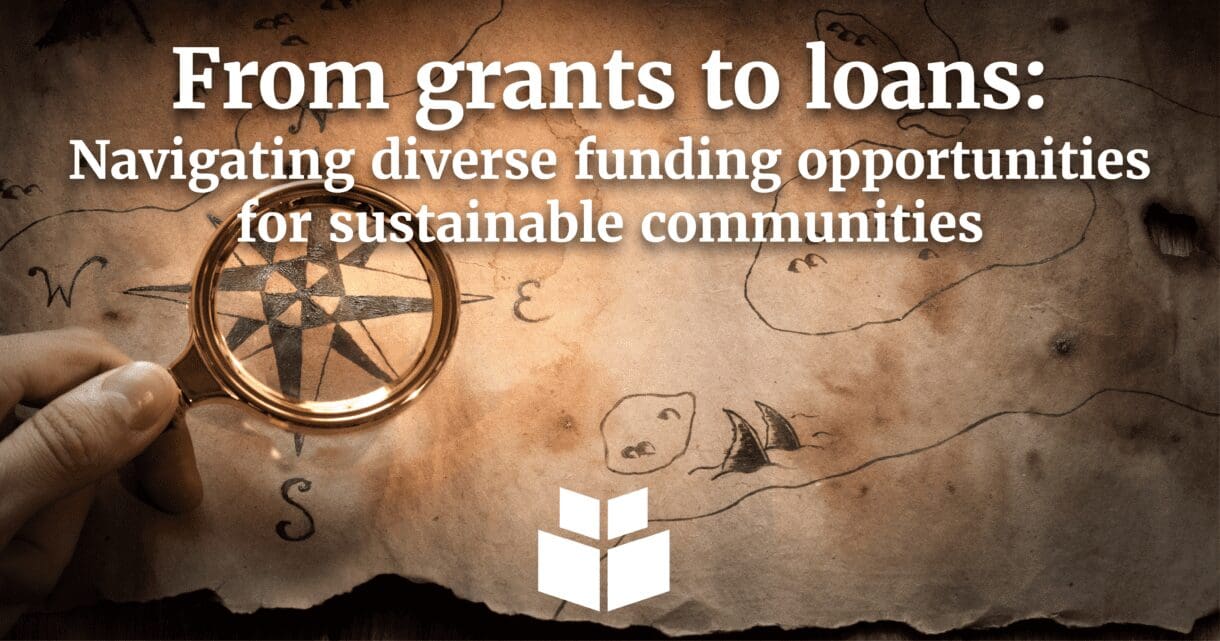
Is your community looking for ways to revitalize its downtown, enhance critical infrastructure, or stimulate economic development?
One powerful tool in these pursuits is identifying and leveraging the right funding opportunities. For local government employees and elected officials seeking to make these changes, strategically pursuing available grants can make all the difference. However, transforming communities through strategic funding opportunities is a multifaceted endeavor that requires careful consideration and planning. By diversifying funding sources, prioritizing planning, and exploring unconventional opportunities, communities can pave the way for lasting positive change.
Strategic Grant Utilization for Parks, Trails, and Recreation:
Many communities look to transform their downtown areas, enhance parks, or develop recreational infrastructure. For projects like trails and parks, identifying specific grants is paramount. In North Carolina, the Recreational Trails Program provides funding for the construction of new trails, maintenance and repair of existing trails, land acquisition, purchase of trail tools and planning, legal, environmental, and permitting costs. Beginning in February, eligible agencies may submit one application per project prior to the application deadline in August.
Additionally, the North Carolina Land and Water Fund (NCLWF) can be a valuable resource for funding projects around lakes or bodies of water. The NCLWF seeks to improve water quality; sustain ecological diversity; protect historic sites; restore fish habitats, wildlife, and other species; and enhance the filtering of stormwater runoff to reduce pollutants from entering water supplies. Grant applications and opportunities are offered to municipalities multiple times throughout the year and can cover a variety of land acquisition projects, including the following:
- Riparian buffers
- Cultural and historic sites
- Ecological diversity
- Military installation buffers
- Greenways
Think of these grants as seeds that, when planted strategically along the community landscape, grow into interconnected trails and parks, fostering community well-being.
Leveraging Specialized Funds for Downtown Revitalization:
Downtown revitalization projects require specialized funds as highlighted by the State of North Carolina’s Rural Transformation Grants. Originating from the Department of Commerce, this program, initially funded through the American Rescue Plan Act (ARPA), focuses on transforming rural areas. These grants can support:
- Main Street and downtown investment and revitalization efforts,
- Initiatives that help create resilient neighborhoods,
- Community enhancements that spur economic growth, and
- Professional development and education programs to build local government capacity.
Additionally, Golden LEAF is another source that communities can tap into for open grants related to community and neighborhood facilities. Planning is essential for these transformative projects, and funds from Golden LEAF can be utilized for master planning, stormwater mitigation, or economic development, ensuring a holistic approach to community transformation. Diversifying funding sources not only increases the chances of securing support but also allows communities to address multiple aspects of community development simultaneously.
Beyond Visible Transformation – Planning and Infrastructure:
Transforming communities isn’t solely about visible changes on the surface—many times, the importance of planning and resilient infrastructure is overlooked. The Federal Emergency Management Agency (FEMA) and Golden LEAF offer planning funds for projects addressing recurring issues such as flooding or storm damage. While these funds may not result in immediate visible changes, they lay the groundwork for sustainable and resilient development. Moreover, emerging contaminants like PFAS present health and environmental challenges. Communities experiencing issues related to PFAS contamination can access funding with 100% principal forgiveness, providing a significant financial boost for critical projects.
Just as a well-thought-out blueprint ensures a sturdy building, planning funds lay the groundwork for resilient communities, reducing the impact of recurrent challenges.
Considering Long-term Financing Options:
Communities often focus on grants to provide immediate funding for emergent and urgent needs, but large, ongoing, or recurring challenges may require additional resources that grants simply can’t deliver. United States Department of Agriculture (USDA) loans can bridge the gap, ensuring that communities can undertake transformative endeavors that may be harder to finance through grants alone. USDA loans offer low-interest rates and extended repayment terms of up to 30 or even 40 years. While not ideal for every project, their favorable terms make them a strong contender for financing community facilities such as town halls and fire stations.
The journey to community transformation involves navigating a diverse landscape of funding opportunities. By strategically harnessing these resources, local governments can lay the groundwork for resilient, vibrant, and sustainable communities.
WithersRavenel has an in-house, dedicated Funding & Finance team that enables clients to administer critical programs, initiatives, and projects. If you’re interested in learning more about how our team can help you, contact WithersRavenel’s Director of Finance Services Shannon Moore at smoore@withersravenel.com or (919) 978-3862 or WithersRavenel’s Director of Funding Services Amanda Whitaker at awhitaker@withersravenel.com or (919) 238-0448.
